Mass loaded Vinyl is one of the most popular materials used for soundproofing. It's a highly versatile and effective medium for blocking the transmission of soundwaves.
While it's very effective, it's also quite expensive. Before determining alternatives to this medium, we should first define what mass loaded vinyl is.
Mass Loaded Vinyl (MLV), is a viscoelastic material like polyvinylchloride (PVC or vinyl) that has been loaded with an inert material like barium sulfate or calcium carbonate for added weight.
You might be familiar with viscoelasticity that defines memory foam. Visco-elastic describes two concepts: viscocity and elasticity.
Materials that are viscoelastic in nature – such as MLV – do both, they flow when force is applied to them, and return to their original shape when the force has been removed.
This process is referred to as hysteresis or “damping" and it allows MLV the ability to absorb and dissipate sound.
Mass loaded vinyl is essentially a reflective sound barrier. Meaning, it keeps sound confined to a space as well as out of adjoining spaces. MLV does not have sound absorption qualities, instead it's used for damping (viscoelasticity).
Damping sound is the reduction of resonance in a room through reflection and diffusion. This means that sound is dissipated before it has the potential to build up and radiate sound-waves.
The following is a common analogy that's used to understand this concept:
Imagine a bed sheet hanging from a clothesline. Now picture someone throwing a ball at the bed sheet.
What happens to the bed sheet when the ball impacts it?
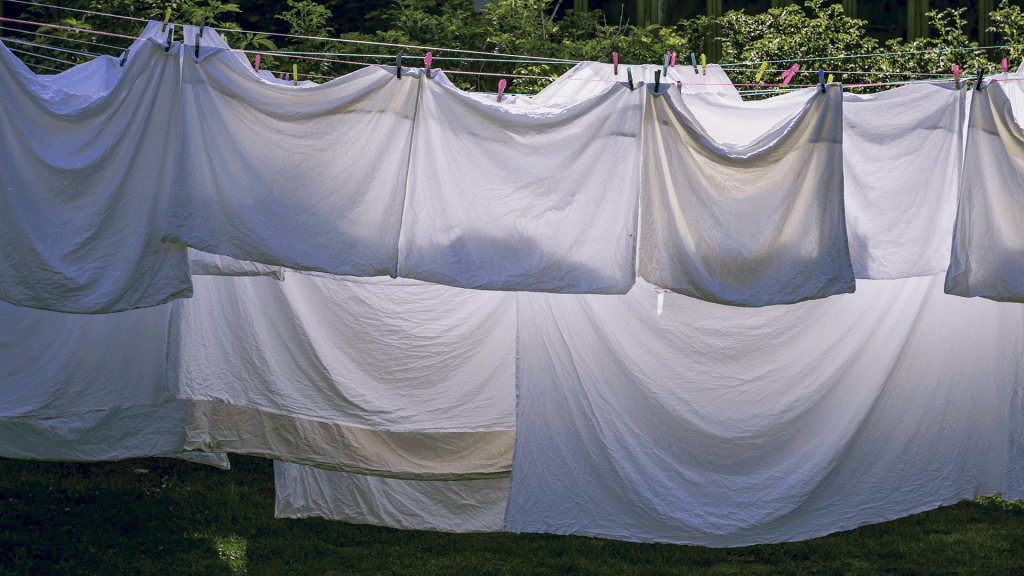
In a very short distance, the ball loses its energy and falls to the ground. The bed sheet "bled" off the energy by being able to move in a 3-dimensional space.
Now imagine the sheet was static and rigid. What would happen to the ball?
The ball would bounce off the sheet and the net energy that remains in the sheet would cause it to vibrate.
Picture this analogy in regards to sound. When soundwaves impact a wall, they bounce off and generate energy. That energy causes a vibration in the wall, and creates airborne and structure-borne noise.
If the wall was fluid like the bed sheet the soundwaves would bounce into the wall, lose energy and dissipate.
While you can’t make a wall malleable like a bed sheet, you can apply materials to the interior of the wall that are malleable forming a "limp mass barrier." MLV is installed against studs with drywall applied over it. This creates a 3-dimensional barrier that can bleed off sound-waves.
Mass Loaded Vinyl is a highly versatile material. As such, it can be used in a variety of applications; walls, floors, ceilings, etc. Despite its effectiveness, MLV does tend to be pricey especially if you’re soundproofing a large space.
While there are alternatives to MLV, it’s important to note that the alternative you use is highly dependent on application. In other words, while MLV is versatile, other materials are not.
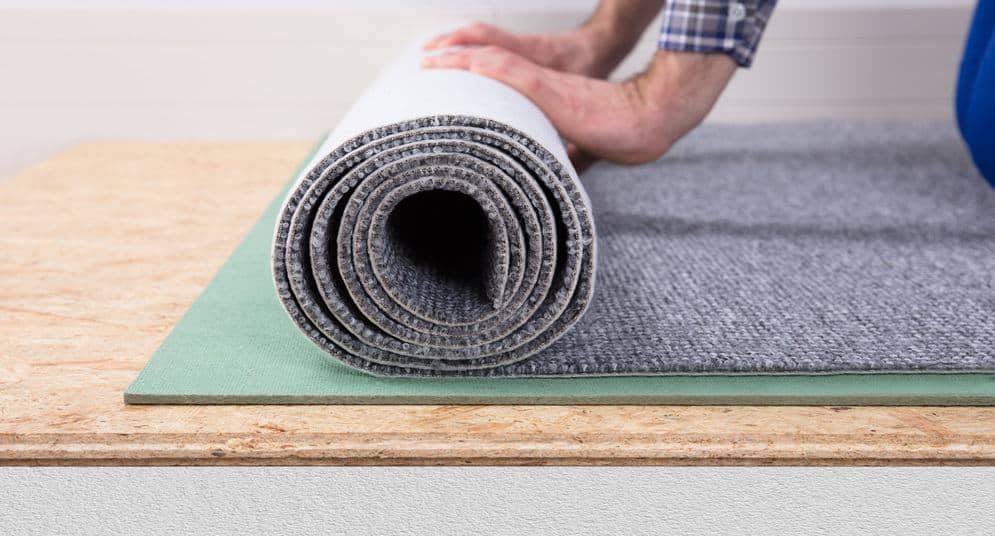
If you’re soundproofing a floor, a good alternative to MLV is an STC/IIC rated floor underlayment. However, before we discuss these options we should first understand what these ratings mean.
The main tests used in the flooring industry are Impact Isolation Class (IIC) and Sound Transmission Class (STC).
The process for measuring these values involves a complicated process and apparatus as well as mathematical formulas. For our purposes we simply need to know that the higher the rating, the higher the resistance of the material.
Floor underlayment is used to create a smooth, predictable surface for new flooring. This means that not all underlayment is used to offer soundproofing qualities.
Typically, any foam underlayment, will advertise that it's effective against sound. These claims can certainly offer some validity, however these materials need to be distinguished from materials that are acoustically engineered.
A regular foam underlayment is the cheapest option and it's also the least effective. It's readily available at a number of hardware stores and is sold under many brand names.
Standard polyethylene foam is common for installing over plywood, oriented strand board (OSB) or the existing sub-floor where a moisture barrier isn't required.
However there are various forms of this material. They're usually 2-3 mm thick and come in pre-packaged rolls. What they have in common though is that they're a low density material that offer some sound reducing qualities.
Acoustic foam is a very dense material that's specifically designed to deaden sound energy.
While acoustic foam is also marketed under a variety of names, you should always look at the material's density.
A quick way to evaluate density is by looking at the weight of the material in relation to it's size.
A recycled felt is an eco-friendly soundproofing solution. It's less expensive than acoustic foam, however it's roughly twice as expensive as polyethylene.
This material is common with engineered wood and laminate flooring.
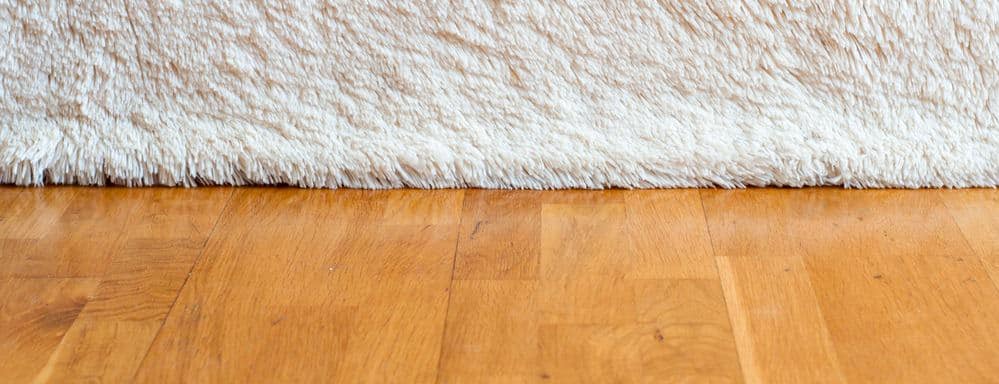
Another alternative to MLV is carpeting or area rugs. This can be a particularly useful option if you don't want to remove the floor to lay down underlayment.
Carpeting and area rugs are soft and can absorb soundwaves, which will help to prevent the transmission of structure-borne noise.
When choosing carpeting or area rugs, the thicker and the tighter the weave, the better. Additionally, you should look for options that feature thick backings.
You can further enhance the soundproofing ability of the rugs by affixing a layer of acoustic foam material to the bottom of the rugs. This will help ameliorate the absorption qualities.
The best time to soundproof a space is during the construction process. With that said, soundproofing requirements are usually thought of after the fact.
Learn more: How to Soundproof Newly Constructed Walls
The above guide will detail the process and materials used for new wall assemblies.
Most people will already have walls constructed. Your two best alternatives are: blown insulation and additional layers of drywall and greenglue.
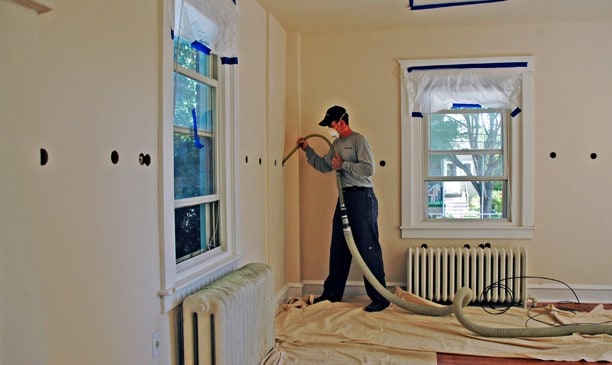
Using blown insulation is an effective way to soundproof existing walls. This insulation is a loose, low-density cellulose material that can help to minimize the transfer of sound waves.
The material works by creating pockets of air that can trap sound waves. This insulating process can also prevent heat transfer.
This process is usually done by creating holes (3-4" in diameter) in the center of the wall. The insulation is then literally blown into the holes to fill up the cavity. The drywall cut outs are then patched and painted.
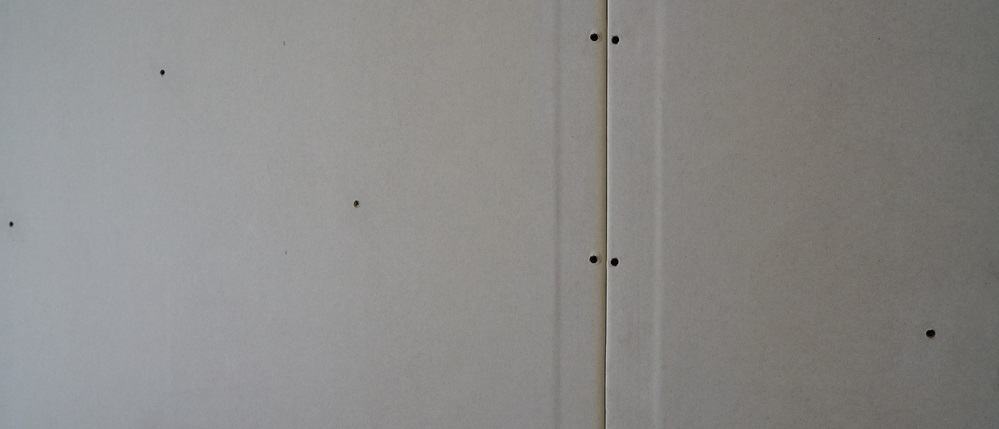
An additional layer of drywall can help to add more mass and density to the wall. As we know, adding mass to something results in improved soundproofing capabilities.
It's important to note that no matter how heavy something is, it still has the potential to transmit vibrational energy.
For this method, invest in acoustically enhanced gypsum drywall and apply a layer of green glue to the surface. Once up, use acoustic caulking to seal up gaps along the edges of the panels.
As we learned above, MLV is a reflective sound barrier. Unlike MLV, soundproof foam panels are a soft, porous material that absorb soundwaves and transform sound energy into heat. This results in very little sound being reflected into a space.
Acoustic foam panels are available in a variety shapes, sizes, and colors. While these materials are common in home theaters and recording studios, they can also be used as an alternative to MLV.
While MLV is a highly effective soundproofing material, it can be quite pricey. If you’re looking for a more cost-effective way to soundproof your home or business, the above-mentioned suggestions are viable alternatives to MLV.

Snoringsource.com is a participant in the Amazon Services LLC Associates Program, an affiliate advertising program designed to provide a means for website owners to earn advertising fees by advertising and linking to amazon(.com, .co.uk, .ca etc) and any other website that may be affiliated with Amazon Service LLC Associates Program.